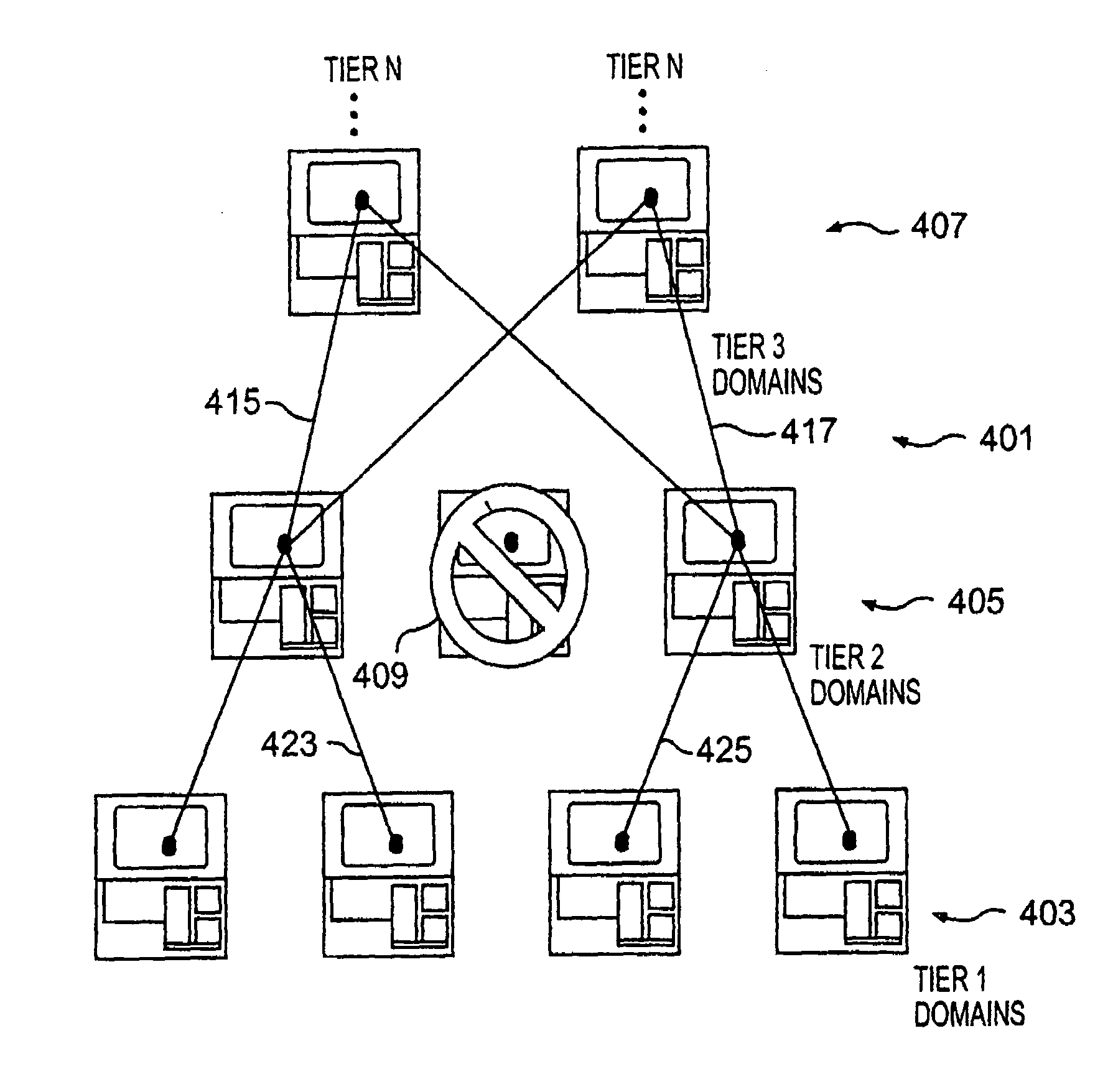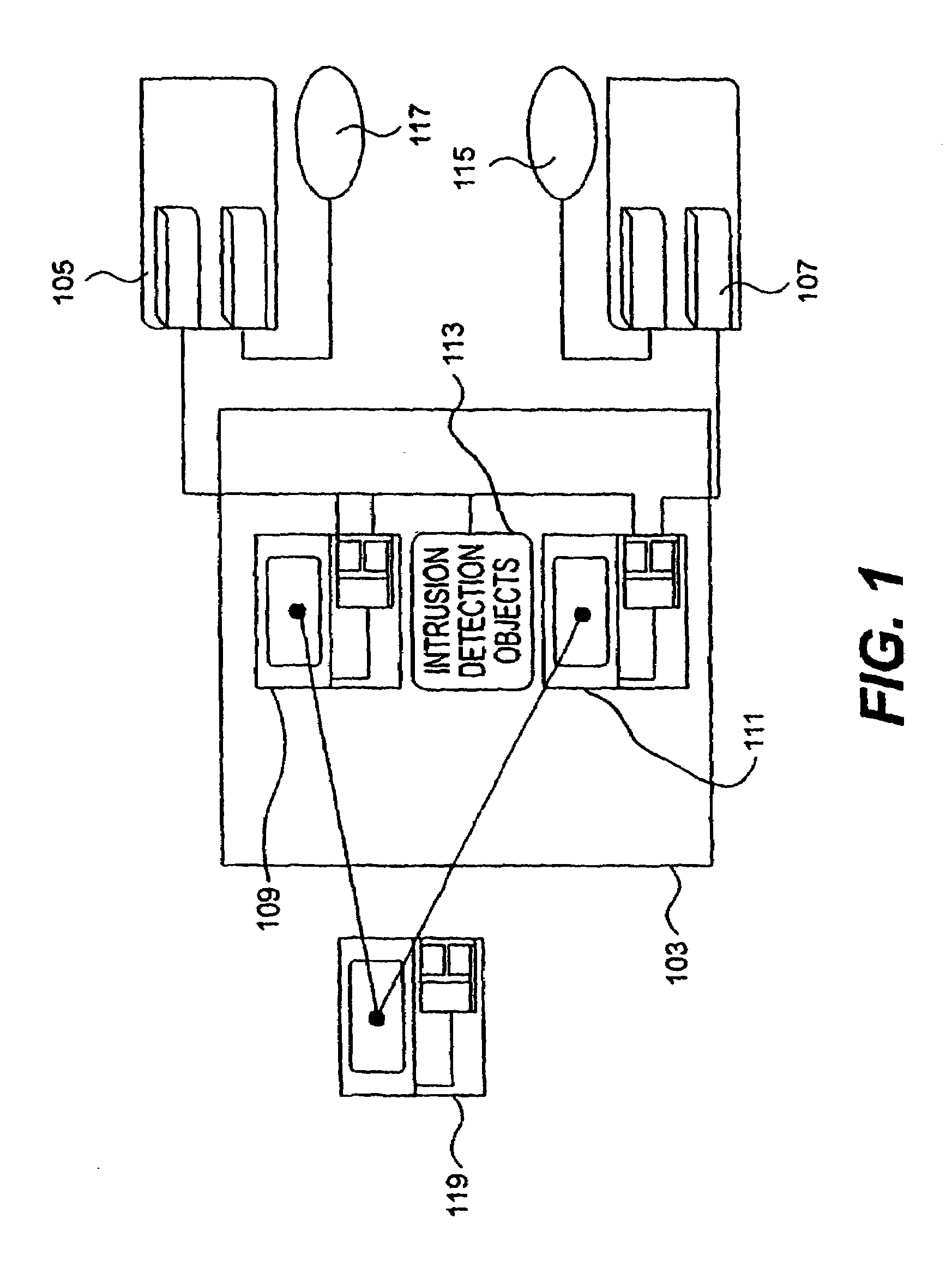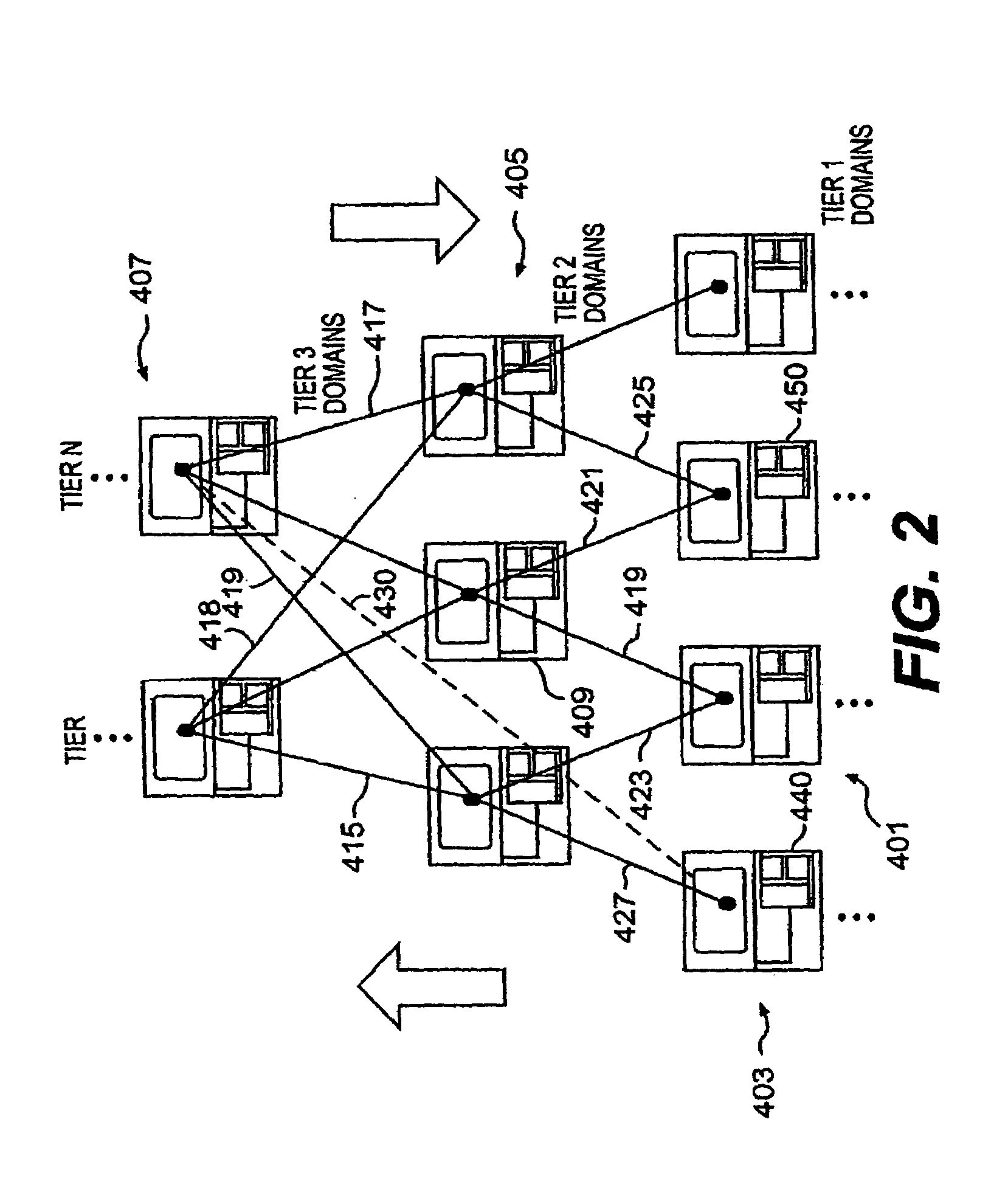Real time active network compartmentalization
a real-time active network and network compartment technology, applied in the field of digital communication networks, can solve the problems of fundamental threat to the global network infrastructure, reducing the functionality of the processor to levels, and reporting of increasingly sophisticated intruder attacks on both military and commercial computer systems, so as to maintain substantially undiminished network capabilities, minimal disruption, and rapid restoration of full functionality
- Summary
- Abstract
- Description
- Claims
- Application Information
AI Technical Summary
Benefits of technology
Problems solved by technology
Method used
Image
Examples
Embodiment Construction
[0027]Referring now to the drawings, and more particularly to FIG. 1, there is shown a basic network element 103 and associated network nodes in accordance with the invention. It should be understood that routers are well-understood network elements for controlling communications between nodes of a network although only a single router (but which may have an arbitrary number of ports) would normally be associated with a given node of the network. Use of a lock in combination with routers is also well-understood in the art. However, it should be understood that no portion of any Figure is admitted to be prior art in regard to the present invention.
[0028]As will become clear from the following discussion, the present invention provides a secure, fault-tolerant network than can implement an arbitrary security policy with arbitrarily fine granularity and continue to provide service in the presence of a variety of hardware failures and security penetration attacks. This is accomplished b...
PUM
 Login to View More
Login to View More Abstract
Description
Claims
Application Information
 Login to View More
Login to View More - R&D
- Intellectual Property
- Life Sciences
- Materials
- Tech Scout
- Unparalleled Data Quality
- Higher Quality Content
- 60% Fewer Hallucinations
Browse by: Latest US Patents, China's latest patents, Technical Efficacy Thesaurus, Application Domain, Technology Topic, Popular Technical Reports.
© 2025 PatSnap. All rights reserved.Legal|Privacy policy|Modern Slavery Act Transparency Statement|Sitemap|About US| Contact US: help@patsnap.com



